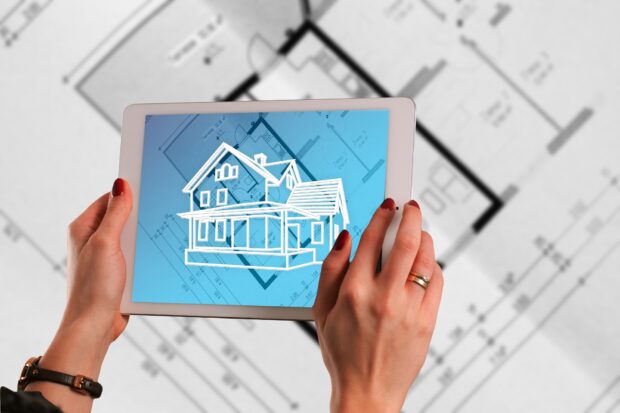
In the fast-paced world of real estate, technology is dramatically reshaping the landscape, and virtual staging is leading the charge. Gone are the days when potential buyers had to rely solely on their imagination to envision a home’s potential.
With the advent of sophisticated digital tools, properties can now be brought to life in vibrant detail, showcasing not just space, but lifestyle. Imagine stepping into a vacant home and immediately being enveloped by a visually striking arrangement of furniture and decor, all designed with a discerning eye.
This tech revolution is not just about aesthetics; its transforming how homes are marketed and sold. As buyers demand more from their viewing experiences, virtual staging is proving to be a powerful ally, bridging the gap between a mere listing and an aspirational home.
Through innovative graphics and immersive visuals, the future of home selling is not just about bricks and mortar but about crafting a narrative that captivates the heart.
The Evolution of Home Staging

The evolution of home staging has undergone a remarkable transformation, shifting from traditional, hands-on approaches to the innovative realm of virtual staging, which harnesses cutting-edge technology to revolutionize the real estate market. In the early days, professional stagers relied on physical furniture and decor, meticulously arranging spaces to appeal to potential buyers.
However, as the digital landscape expanded, so did the possibilities: now, sellers can showcase properties with beautifully rendered images that highlight potential without the clutter of actual furnishings. Virtual staging allows for rapid changes, customization, and even experimentation with various design styles—something physical staging could never achieve so efficiently.
This shift not only saves time and costs but also opens the door for a more expansive and creative presentation of homes, enticing buyers with immersive visions of what could be. As we stand at this exciting intersection of creativity and technology, it’s clear that the future of home staging is not just about impressing buyers; it’s about transforming the way homes are perceived and, ultimately, sold.
3D Rendering and Software Innovations

The landscape of real estate marketing has been dramatically reshaped by advancements in 3D rendering and software innovations, paving the way for a new era of virtual staging. As potential buyers increasingly rely on digital platforms for their home searches, architects and designers harness cutting-edge technologies to create hyper-realistic visualizations that transcend traditional photography.
Imagine walking through a living room that isn’t just staged; it’s a vivid experience that pulls you into a world of possibilities, allowing you to envision your life in a space that has been brought to life with remarkable detail. With software applications that seamlessly integrate augmented reality features, buyers can now visualize furniture arrangements and decor styles in real-time, instantly tailoring the space to their unique tastes.
This fusion of creativity and technology not only captivates prospective clients but also empowers sellers to present their homes in the most compelling light, reimagining the conventional pathways of property marketing in profound ways.
The Role of Augmented Reality in Home Sales

Augmented Reality (AR) is redefining the landscape of home sales, transforming the way potential buyers interact with properties long before stepping through the front door. Picture this: a flick of the wrist, and suddenly an empty room is filled with lifelike furniture, complete with vibrant color schemes and personalized decor.
Buyers can explore these digitally enhanced environments, rearranging elements with a simple tap, allowing them to visualize their future life within each space. This immersive experience doesn’t just streamline the decision-making process; it ignites emotional connections and paints an aspirational picture that static images simply cannot convey.
As home sales continue to embrace this technological revolution, the integration of AR showcases a bold new frontier, one where buyers are not only observing homes but actively imagining their lives within them.
The emergence of virtual staging is transforming the traditional landscape of real estate sales, infusing it with a dynamic energy that captivates both buyers and sellers alike. Imagine scrolling through a property listing and encountering an impeccably designed living space that feels both inviting and aspirational.
Rather than empty rooms that evoke uncertainty, prospective homeowners now find themselves immersed in vibrant, digitally enhanced interiors, carefully crafted to highlight a home’s potential. This innovative approach not only saves time and costs associated with physical staging but also fosters an emotional connection, allowing buyers to envision their lives unfolding within those walls.
With a mere click, walls can become a canvas of possibilities, blurring the lines between reality and imagination, and ultimately streamlining the path to a sale. In this high-stakes game of real estate, virtual staging stands out as a powerful tool—one that is reshaping how properties are showcased and perceived in the digital age.
Conclusion
In conclusion, virtual staging is undeniably transforming the landscape of real estate, offering innovative solutions that enhance property presentation while saving time and resources. This tech revolution not only allows potential buyers to visualize themselves in a home but also empowers sellers and agents to market properties more effectively.
As the real estate industry continues to evolve, embracing digital tools like virtual staging is becoming essential for gaining a competitive edge. For those looking to adapt to these changes, partners like https://gordonbuyshomes.com provide valuable resources and insights, ensuring that buyers and sellers alike can navigate this new era in home selling with ease and confidence. As technology advances, the future of real estate looks brighter than ever, driven by creativity and innovation.



